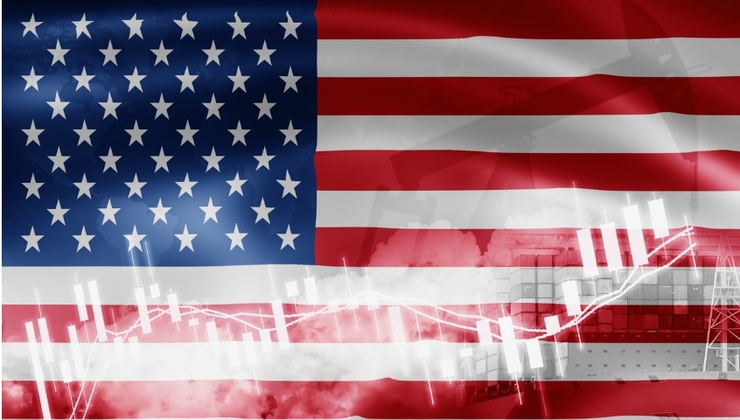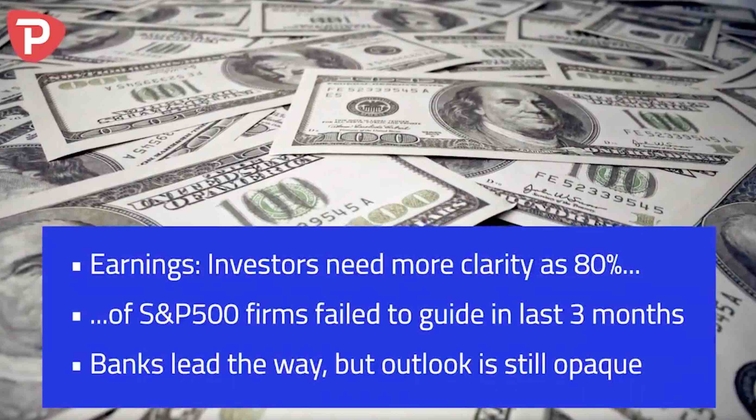- Español
- English
- 简体中文
- 繁体中文
- Tiếng Việt
- ไทย
- Português
- لغة عربية
Analisis
Volatility alert: US election fast approaching
Markets are focussed on the pandemic, lockdown, and economics as cities reopen for business. But both the Democrat and Republican National Conventions are scheduled for August, and from here we’ll see markets actively thinking about election probabilities and pricing in any relevant risk.
At the start of this year, markets were fairly confident the US would elect Trump for a second term - but a lot has changed since. Trump’s approval rating has fallen to 38% - a level where incumbents have historically struggled to bounce back from. Whereas betting markets have the odds of a Biden administration from 2021 north of 60%. It’s a huge turnaround since the start of the year, but with four months to go a lot could change yet.
Trump vs Biden election victory odds, according to PredictIt. Source: Bloomberg
The outcome of the election could bring a significant amount of change but markets are focussing mostly on two major themes here: 1) China and 2) Taxes.
Traders and investors know what to expect from Trump on China policy. Biden, once seen as a softer stance on China, has certainly evolved to a much harder stance over time. Sure Biden would be less likely to slap China with additional tariffs as punishment, but the US-China will remain fragile. On China policy, both candidates are a bearish case for markets, as the trade war stunted global trade and growth.
Taxes are the big uncertainty here. Trump slashed the corporate tax rate to 21% from 35%, a pro-business move designed to encourage more investment in the US economy. Critics note that benefits mostly flowed to wealthy shareholders rather than benefiting the wider US economy. Biden’s ready to reverse the tax cuts - not all the back to 35% but to a middle of the road 28%.
Often overlooked in the tax debate here though is the fact that the corporate tax cuts were mostly deficit financed, which is fiscally expansive. Although a Biden administration will introduce tax hikes, a proposed $2tn stimulus will be mostly deficit financed - still fiscally expansive - and the infrastructure spend might better distribute gains more widely, which is a good case for long-term economic health.
As the election starts to become a consideration for traders, we can see USDJPY 6-month volatility trading at a premium to short-term volatility. Although USDJPY hasn’t been behaving like a safe haven recently, it does have an historical record as the favourite vehicle to hedge election risk. A little closer to the time, perhaps after the party conventions in late August, we could start to see considerable flow into the JPY - especially if markets start to feel nervous about change under a possible Biden administration.
With four months to go, it’s time to think about the US election and if you’re ready for election volatility. A very important one for the trading radar.
| Date | Key election event |
|---|---|
| 17 - 20 August | Democratic National Convention |
| 24 - 27 August | Republican National Convention |
| 29 September | 1st Presidential debate |
| 07 October | Vice presidential debate |
| 15 October | 2nd Presidential debate |
| 22 October | 3rd Presidential debate |
| 3 November | Election day |
Related articles
Artículos más leídos
¿Listo para operar?
Comenzar es fácil y rápido – incluso con un depósito pequeño. Aplique en minutos con nuestro simple proceso de solicitud.
Pepperstone no garantiza que el material proporcionado aquí sea preciso, actual o completo, por lo tanto, no debe confiarse en él como tal. La información, ya sea de un tercero o no, no debe considerarse como una recomendación; o una oferta de compra o venta; o la solicitud de una oferta de compra o venta de cualquier valor, producto financiero o instrumento; o para participar en una estrategia de negociación en particular. No tiene en cuenta la situación financiera u objetivos de inversión de los lectores. Recomendamos a los lectores de este contenido que busquen su propio asesoramiento. Sin la aprobación de Pepperstone, no está permitida la reproducción o redistribución de esta información.

